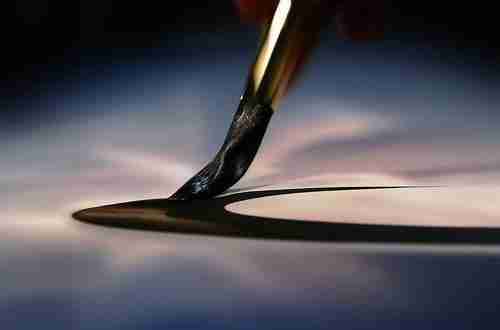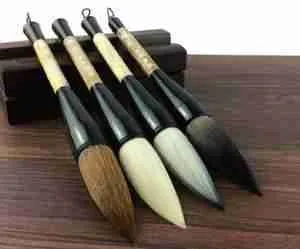Listed as one of the Four Treasures of Study of China, along with the inksticks, Xuan Paper, and inkstones, the Chinese brush is one of the most common tools that’s been used in China for thousands of years. This Chinese ink brush is the most classic representations of ancient Chinese culture. Characters that were drawn using the Chinese brushes have been discovered on jade vessels and oracle bones that date back to as early as the ancient Shang Dynasty that existed between the C.1600 and 1046BC. With characters lasting centuries, it piques anyone’s interest to learn how the Chinese brushes were made.
What are Chinese brushes made of?

The Chinese brushes/ ink brushes are made of animal hairs, with handles made of either bamboo or exotic materials like jade and ivory, hence that high-class finish.
The Chinese ink brush ranges in size from the small ones designed to fit in your palm easily to the bigger ones whose diameter is bigger than 10cm. There also are Chinese Ink Brushes that extend up to 2.5m in length while weighing several kilograms each.
To adapt to different writing and painting styles, the brushes are made of different types of hairs. The most common material used for the hair is wool, referred to as Yanghao in Chinese. The yanghao is quite soft, and it has a higher ink retention capacity; hence its use in painting and in calligraphy where edgeless and milder stroke styles are preferable. On the other hand, you have the brushes that are made of pig or weasel hairs – these brushes are harder and preferred by the artists needing more sharp styles. In between the hard and the soft brushes are the brushes that are made of two hair types, both mixed in different proportions, resulting in more versatile/ mixed writing/ painting effects.
Some of the biggest brands of Chinese brushes include the Hu brushes from Huzhou and Xuan brushes from Jing County. The techniques used in making these brushes are listed as national-level intangible cultural heritages, and these specifications were made in 2006 and in 2008.
Besides the differences in texture and the size of the brushes, the Chinese brushes also differ in terms of the hair sources, the hair texture and size, and the length of the hairs.
The main hair sources include goat hairs, mouse, pig, Siberian weasel, wolf, buffalo, rabbit hair, as well as exotic sources like deer, fowl, tiger, and in other cases, human hairs from babies first haircut.
How do you use a Chinese paintbrush?

A painter using the Chinese brush doesn’t use any models or sketches; they paint from memory, which means that their paintings are creations of their impressions/ imaginations of objects. Nothing painted is corrected, fixed, or improved upon, primarily because the painting done with the Chinese brush symbolizes simplicity, and this is seen through the graceful designs and flowing brush strokes.
Generally, the Chinese brushes and Chinese painting is designed to determine an artist’s ability to illustrate an object’s main features.
To understand how to use the Chinese brush effectively, the painter must be able to create a rhythm based on the composition, pattern, softness, or strength of the strokes, bringing these elements together to create something beautiful.
Line quality is important, and it is guided by experience, discipline, and exploration of a painter, and you can only paint well when you learn and understand how to go with the texture/ pattern of the objects and strokes.
Chinese brushes/ painting is all about beauty, meaning that you need to be able to express yourself and your art beautifully via the brush strokes.
References
1.Ink brush .wikipedia .Retrieved from https://en.wikipedia.org/wiki/Ink_brush
2.Chinese Brush Painting. youtube .